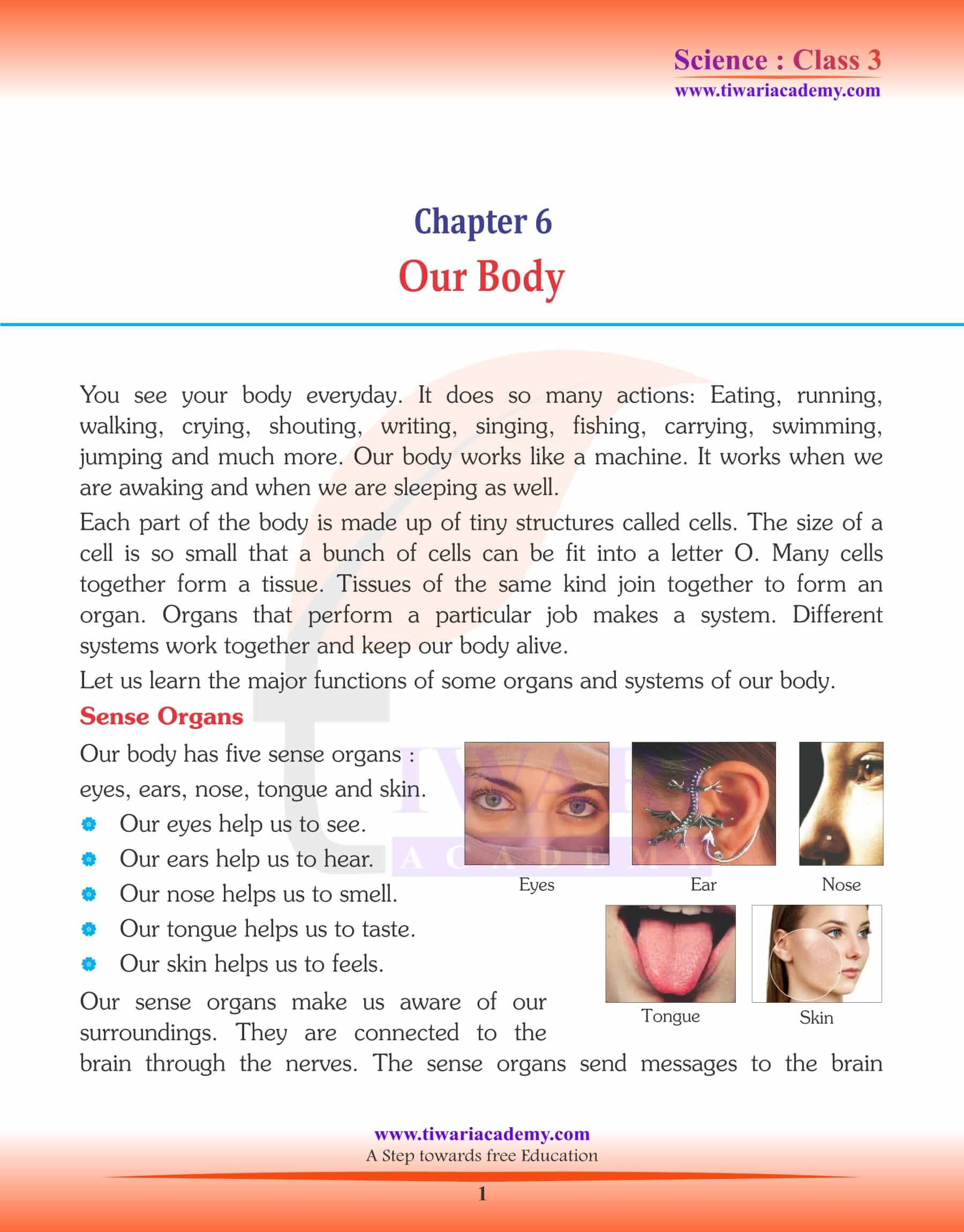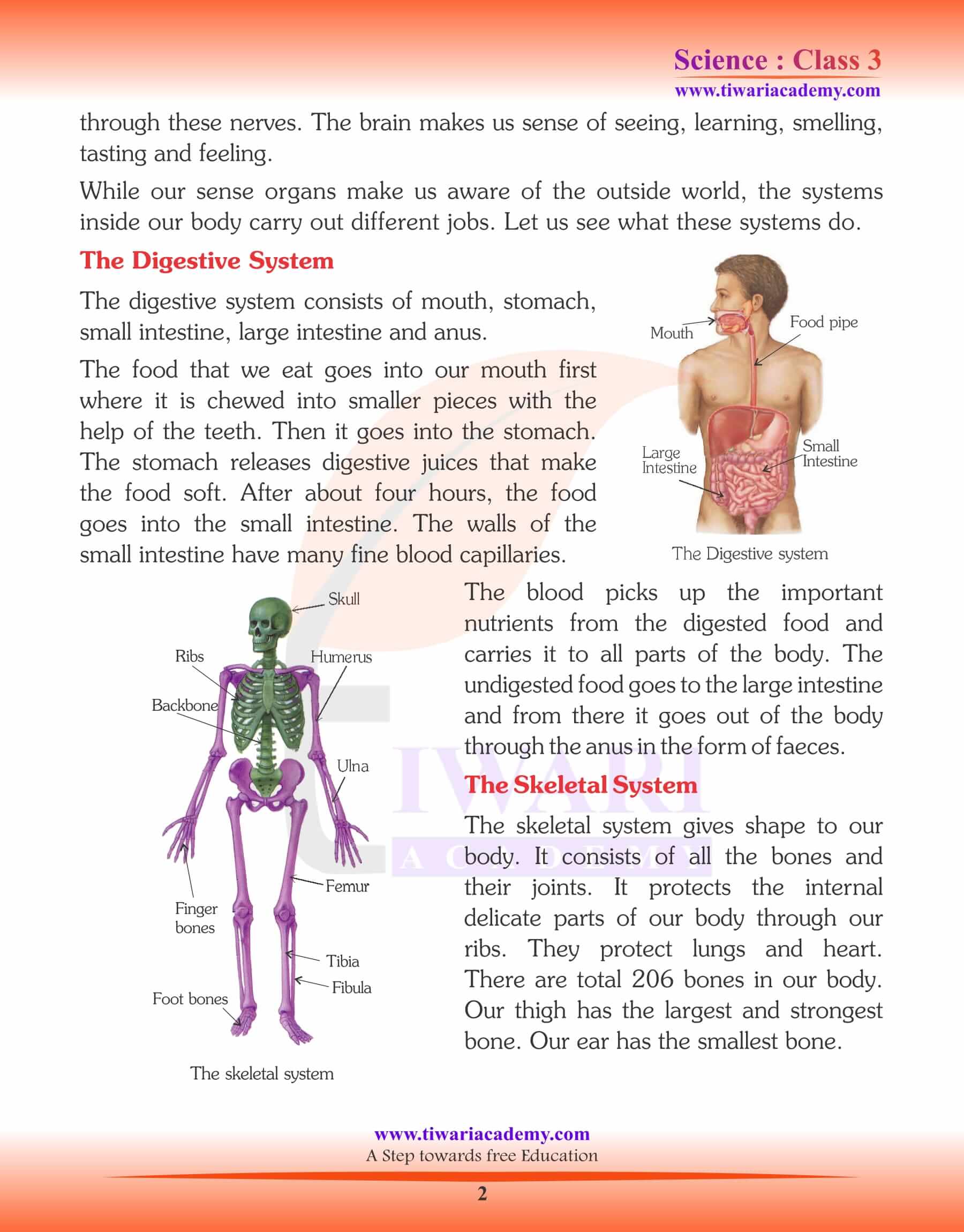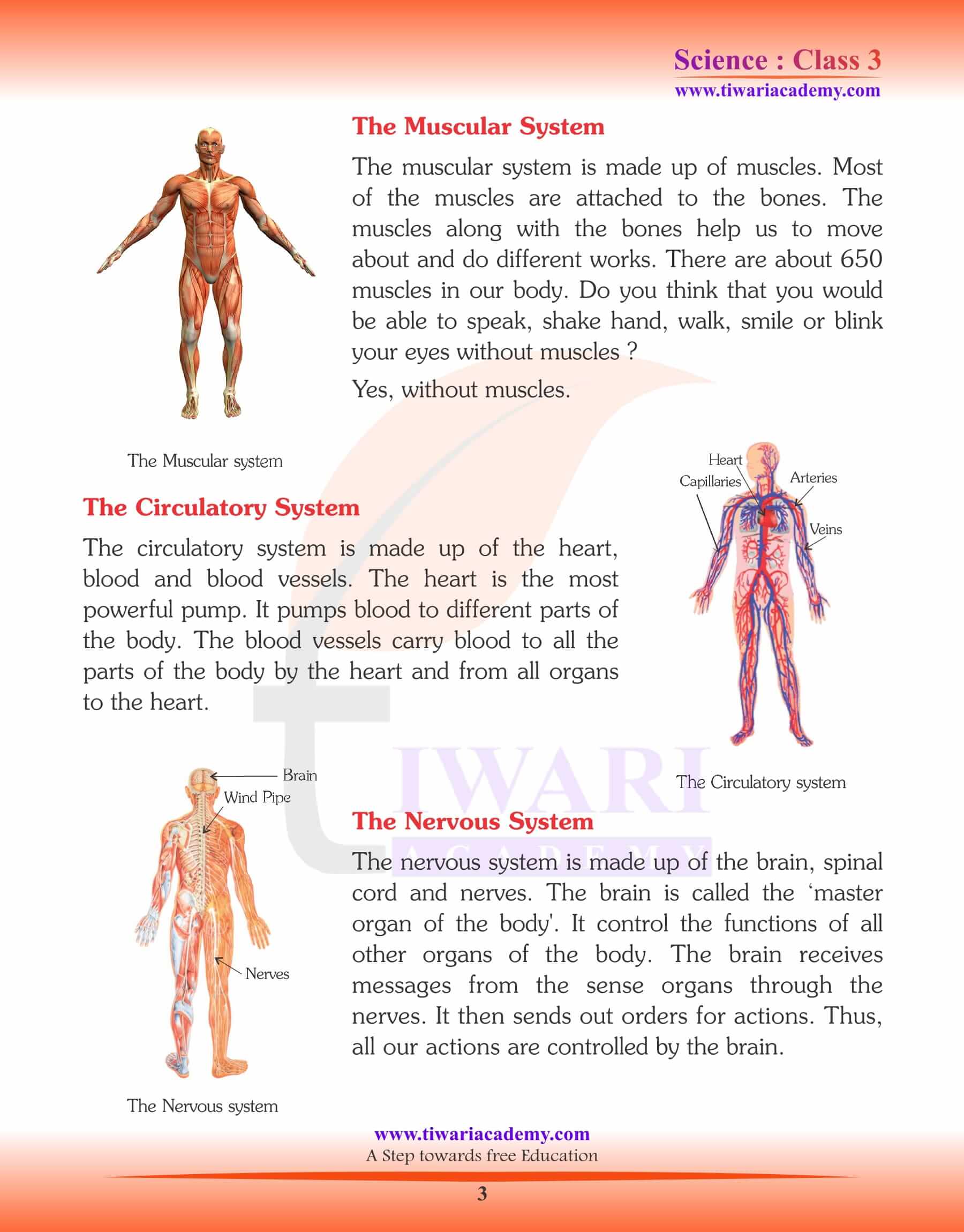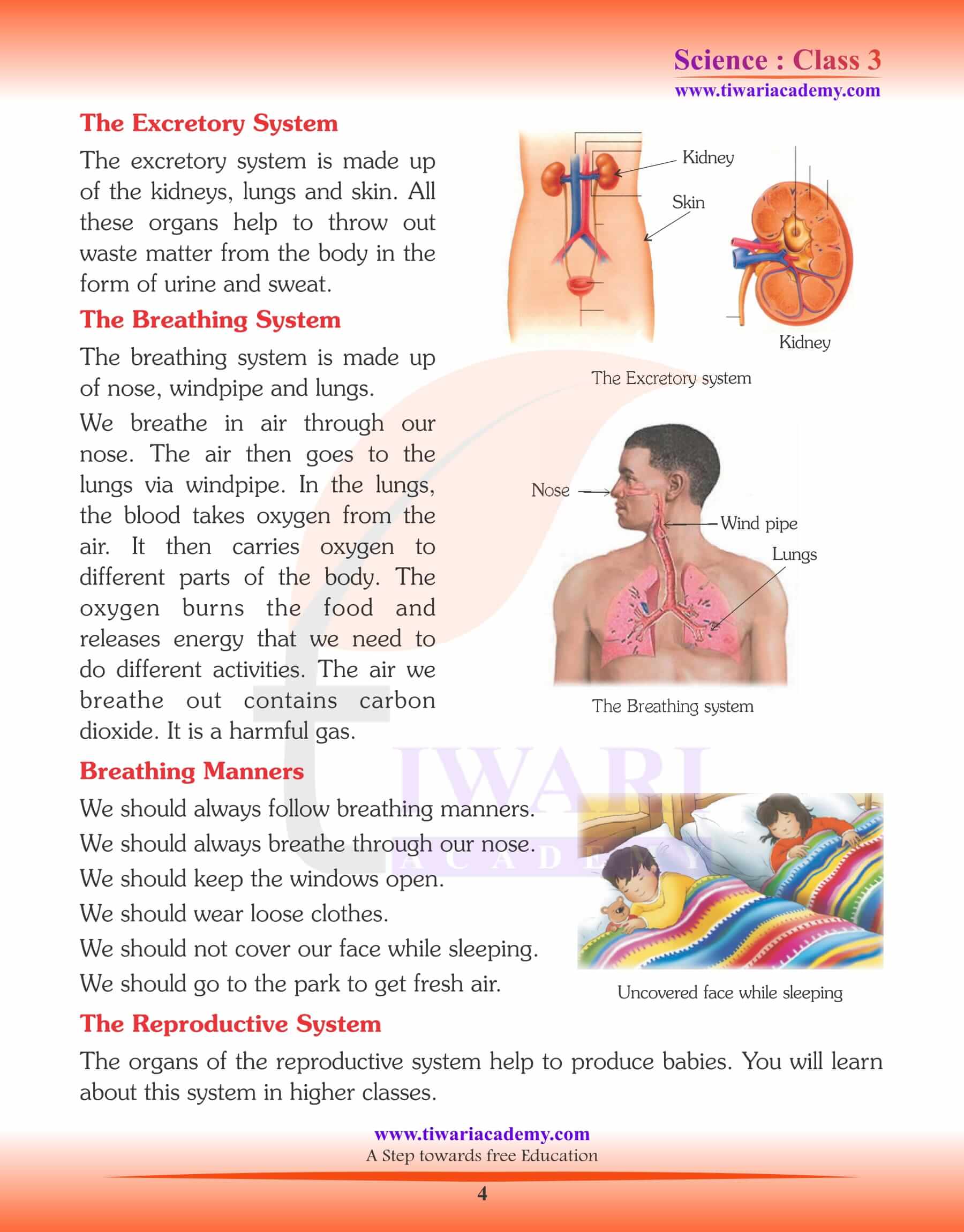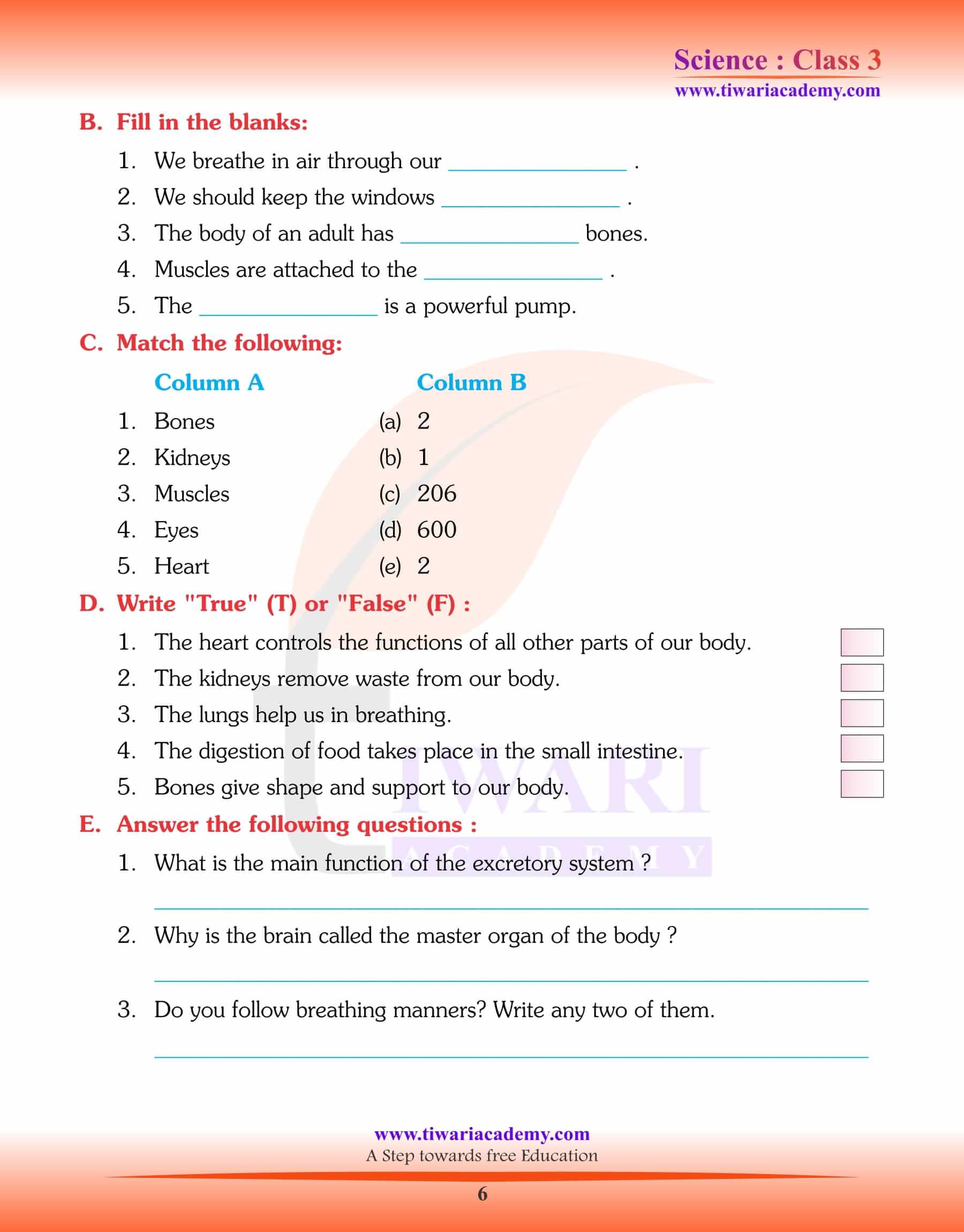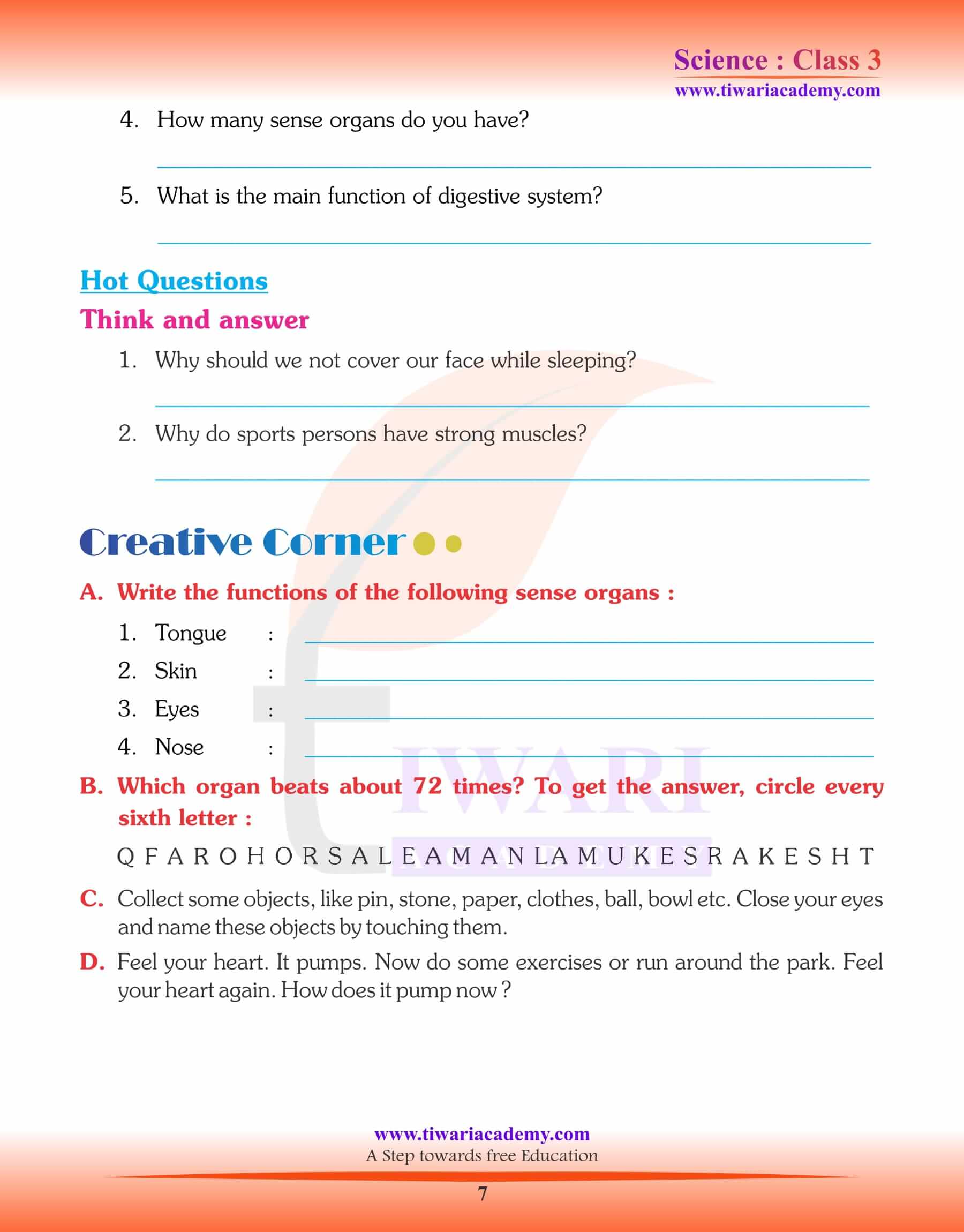NCERT Solutions for Class 3 Science Chapter 6 Our Body and its different parts updated for new session 2025-26 free to access online or use it offline by downloading in PDF. In Class 3 Science chapter 6, students will get the knowledge about the sense organs as well as digestive system pathways. It also explains about the muscular system, respiratory system, nervous system and excretory system. Get here a brief introduction of our body systems.
Study Material for Class 3 Science Chapter 6
Class 3 Science Chapter 6 Our Body
Our Body
human body is mad e up of bones, flesh and blood. It does so many actions: Eating, running, walking, crying, shouting, writing, singing, fishing, carrying, swimming, jumping and much more. Our body works like a machine.
Human Organs
Our body also has many parts. These parts are called organs. Body organs can be divided in two parts:
1. external organs.
2. internal organs
External organs.
The organs which we can see and touch are called Head, nose, ear, eyes, hands, feet, etc. are external organs.
Internal organs
Some of our body organs exist inside our body. We cannot see them. These organs are called internal organs. For example, lungs, stomach, intestines, kidney, etc.
Sense Organs
Human body has some wonderful organs. They help us to know about the outside world. These organs are called the sense organs. There are five sense organs in our body. These are eyes, nose, ears, tongue and skin.
Work of Sense Organs:
1. Eyes help us to see.
2. Ears help us to hear.
3. Nose helps us to smell.
4. Tongue helps us to taste.
5. Skin helps us to feel heat, cold, pain, pressure and touch.
Organ System
Many organs together form an organ system. A particular organ system carries on a particular task. Some important organ systems are:
1. The respiratory system
2. The digestive system
3. The circulatory system
4. The nervous system
5. The skeletal system
6. The muscular system
7. The excretory system
8. The reproductive system
The Respiratory System
The respiratory system is made up of nose, windpipe and lungs. We breathe in air through our nose. The air then goes to the lungs via windpipe. In the lungs, the blood takes oxygen from the air. It then carries oxygen to different parts of the body. The oxygen burns the food and releases energy that we need to do different activities. The air we breathe out contains carbon dioxide. It is a harmful gas.
The Digestive System
The digestive system helps in digestion. Digestion is the process of changing of food into a simple form so that it can be used by our body. The digestive system consists of mouth, stomach, small intestine, large intestine and anus.
The Circulatory System
The circulatory system is made up of the heart, blood and blood vessels. The main function of the circulatory system is to carry blood in different parts of the body. The heart pumps the blood and blood vessels carry the blood to different parts of the body.
The Nervous System
The nervous system is made up of the brain, spinal cord and nerves. The brain is called the ‘master organ of the body’. It controls the functions of all other organs of the body.
Skeletal System
The skeletal system gives shape to our body. It consists of all the bones and their joints. It protects the internal delicate parts of our body through our ribs. Muscular system helps us in movement and protects our internal organs. There are about 600 muscles in our body.
The Excretory System
The main function of the excretory system is to remove wastes from our body. Kidneys remove wastes through urine. The skin removes wastes through sweat. And the lungs remove wastes in the form of carbondioxide.
The Reproductive System
The organs of the reproductive system help to produce babies. You will learn about this system in higher classes.
Important Points
1. Human body is made up of bones, flesh and blood.
2. Our body has many parts known as organs.
3. We can see some of our organs. These organs are called external organs.
4. We cannot see some of our organs. These organs are called internal organs.
5. A group of similar type of cells forms a tissue and a group of similar type of tissues forms an organ.
6. Many organs together form an organ system.
7. Some important organ systems of our body are respiratory system, digestive system, circulatory system, nervous system, skeletal system, muscular system, excretory system and reproductive system.
Select correct answer for given questions:
Which of the following is not a part of the nervous system?
The undigested food goes out of the body through the
Our body has more than
Match the following columns:
| Organ System | Organ |
|---|---|
| Muscular system | a. bones |
| Nervous system | b. kidneys |
| Skeletal system | c. brain |
| Excretory system | d. muscles |
Answers:
1. d
2. c
3. a
4. b
Fill in the blanks:
1. We breathe in air through our ______.
2. We should keep the windows __________.
3. The body of an adult has _______ bones.
4. Muscles are attached to the ______.
5. The _____ is a powerful pump.
Answers:
1. nose
2. open
3. 206
4. bones
5. heart
What is the main function of the excretory system?
The main function of the excretory system is to remove wastes from our body.
Why is the brain called the master organ of the body?
The brain is called the ‘master organ of the body’. It controls the functions of all other organs of the body.
Do you follow breathing manners? Write any two of them.
Yes, I am following breathing manners. For example
1. We should always breathe through our nose.
2. We should keep the windows open.
